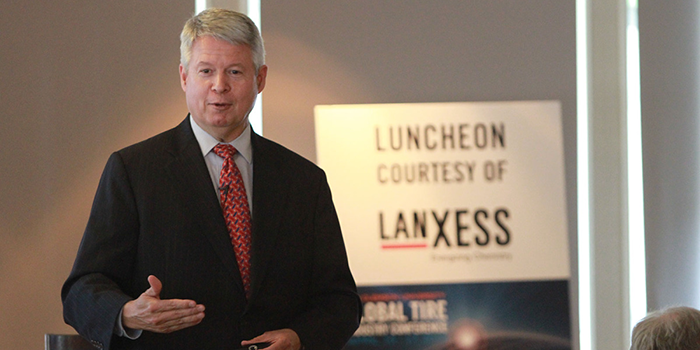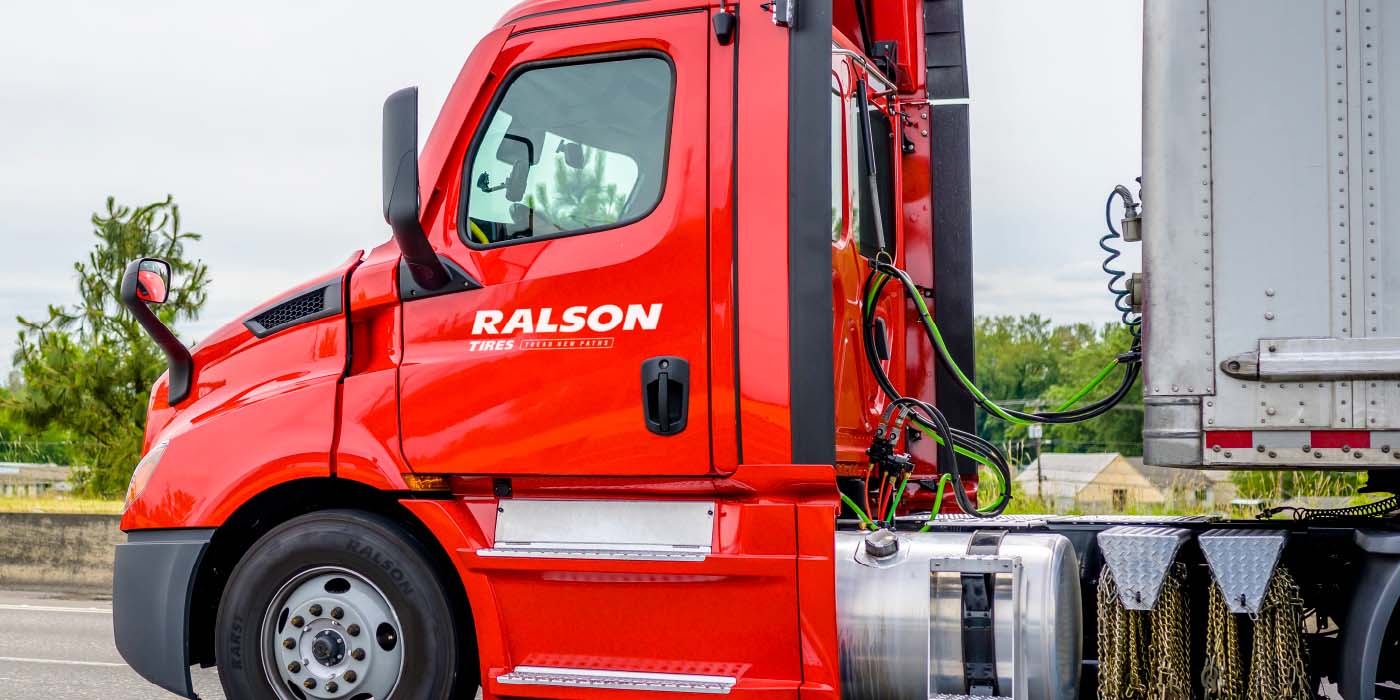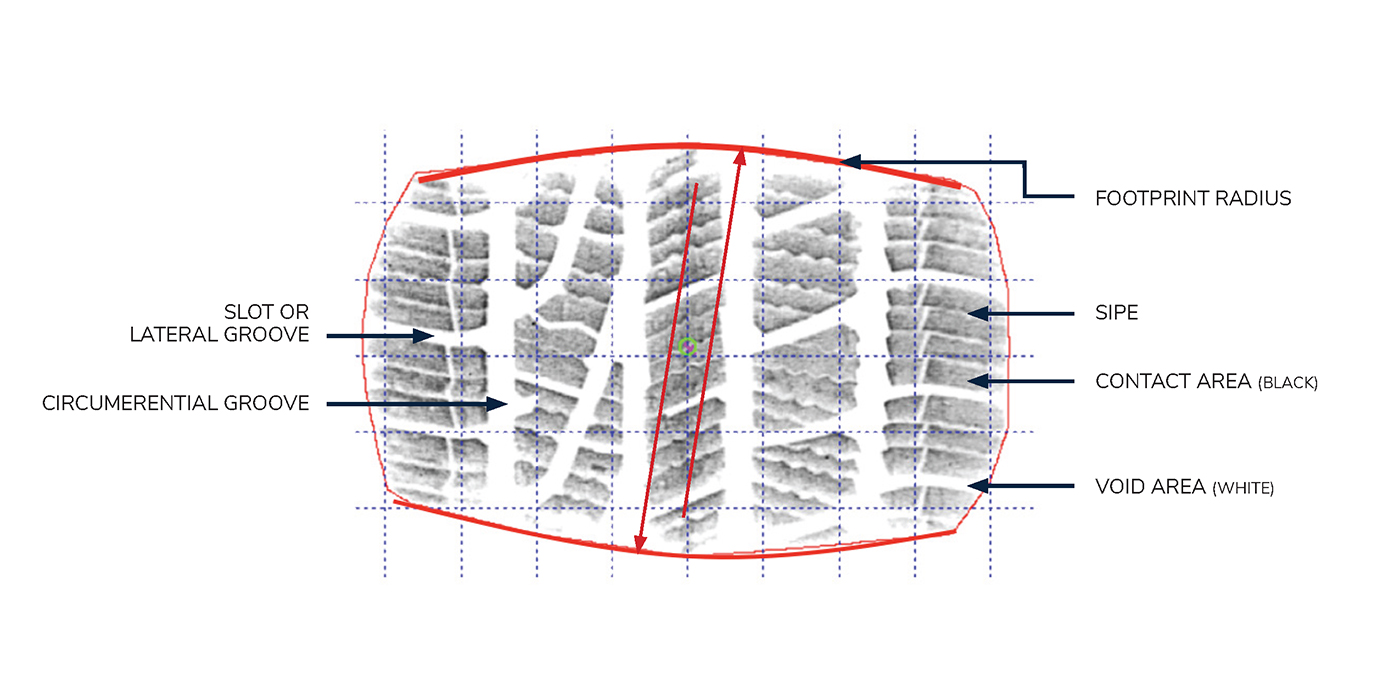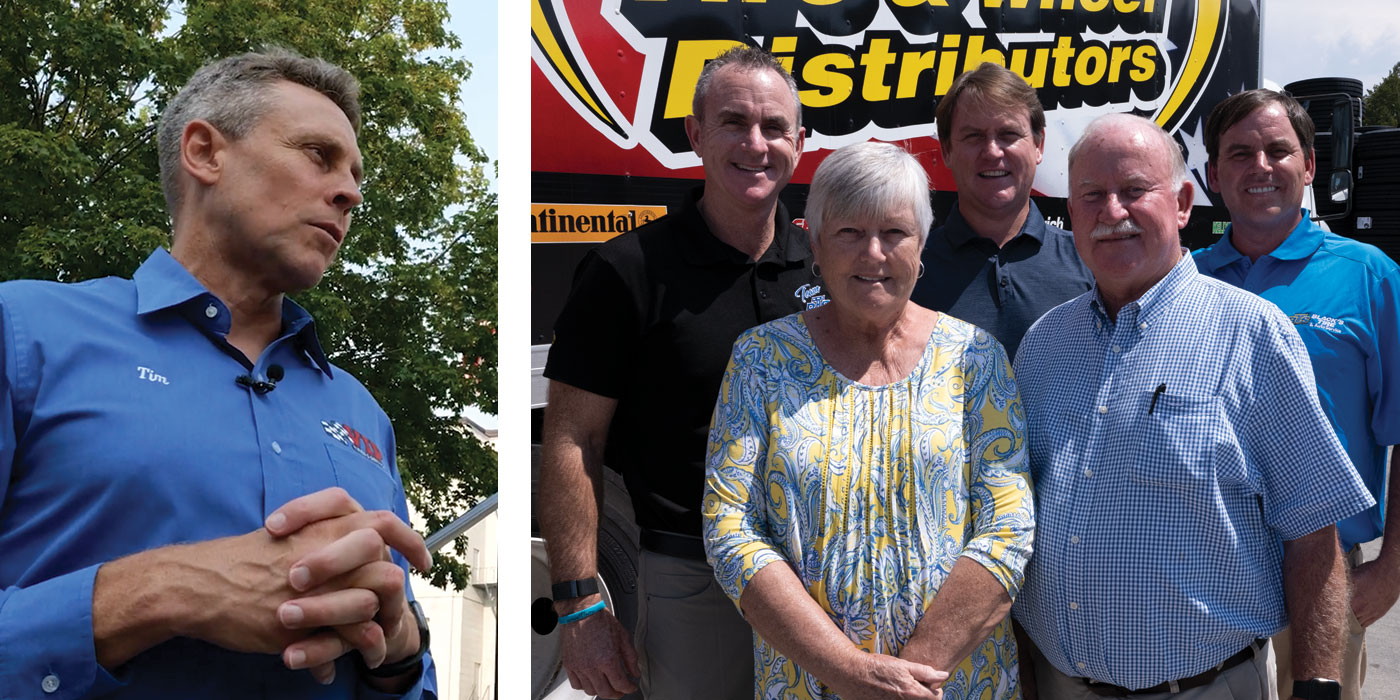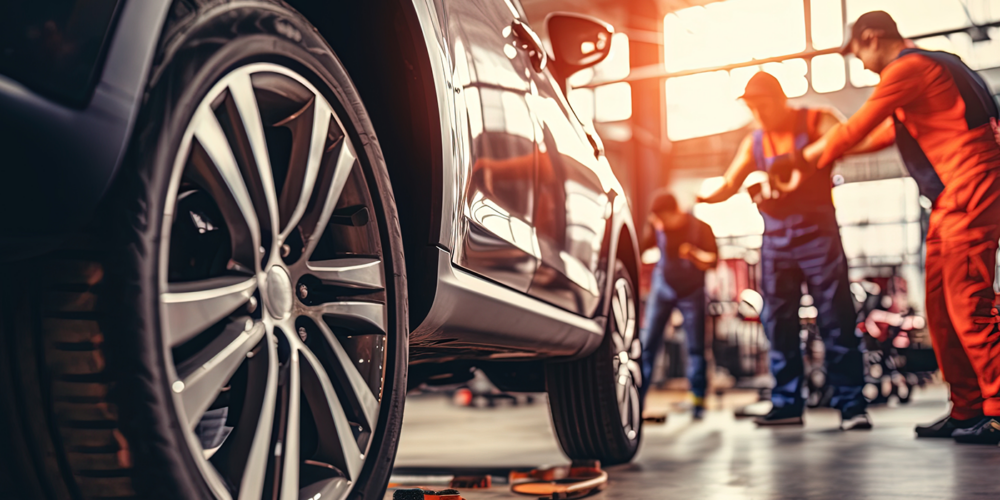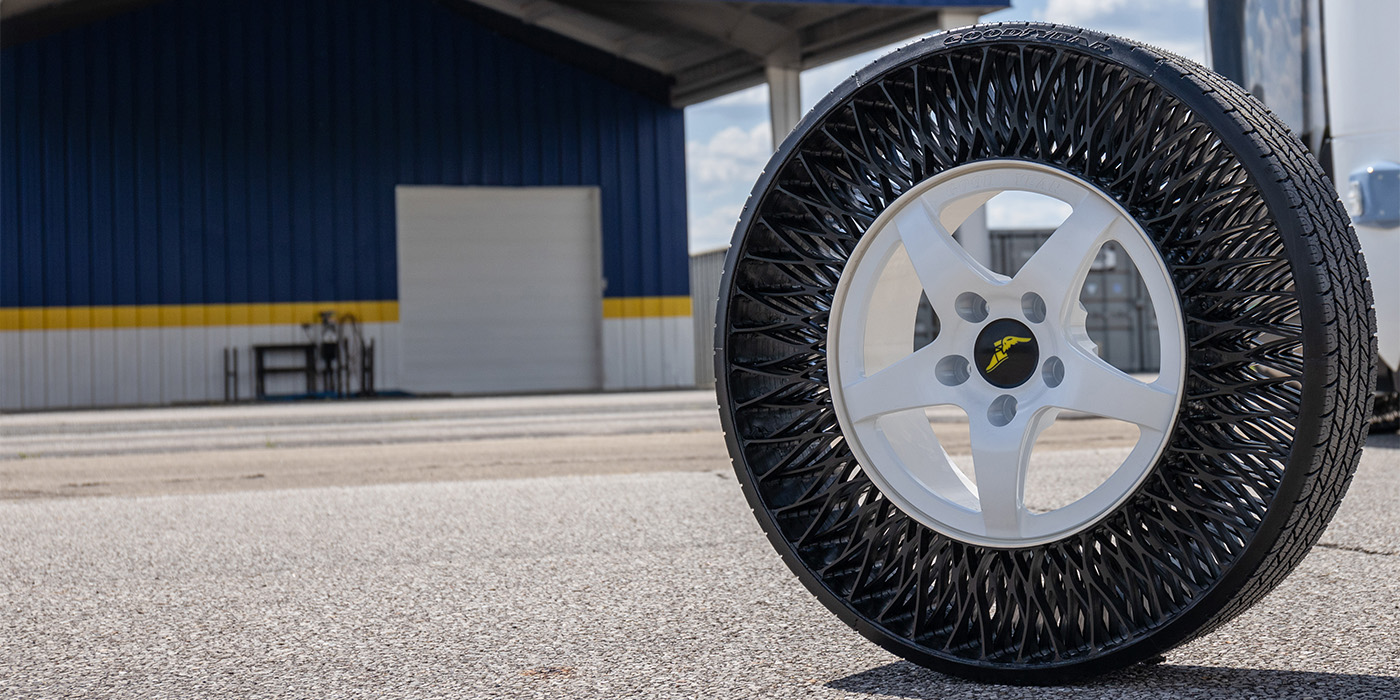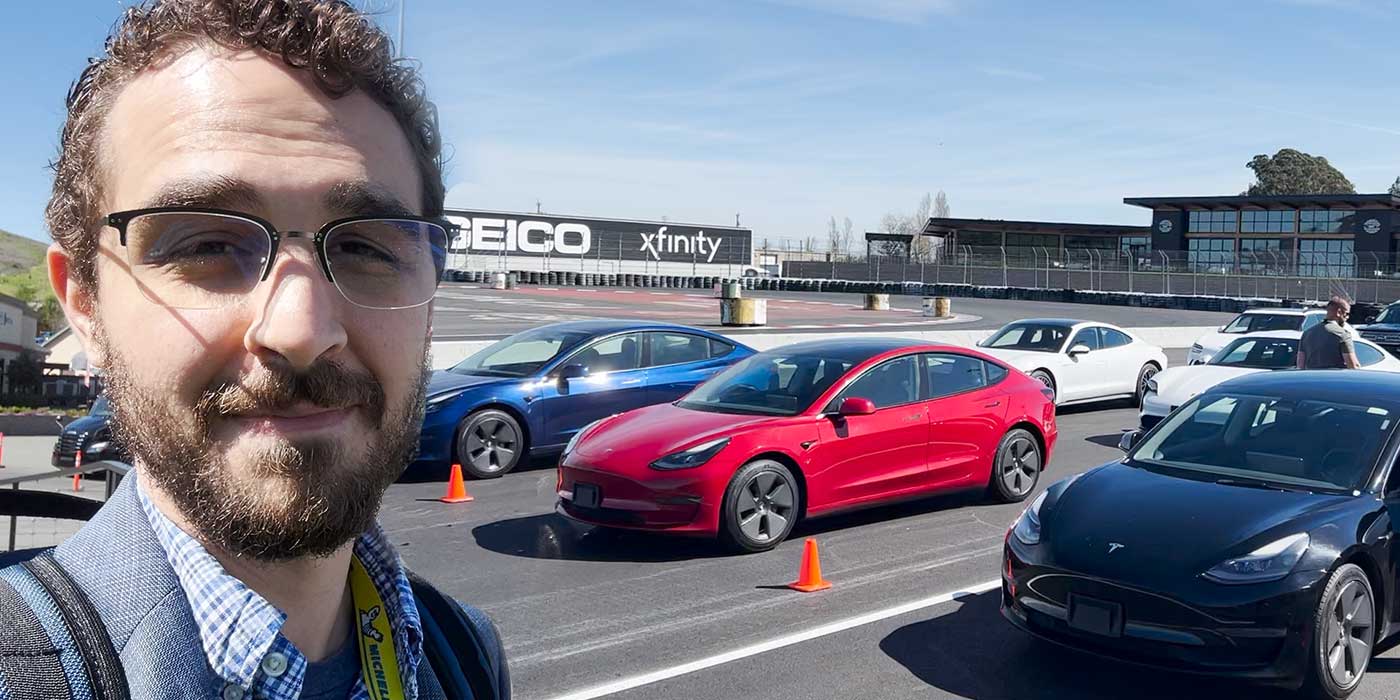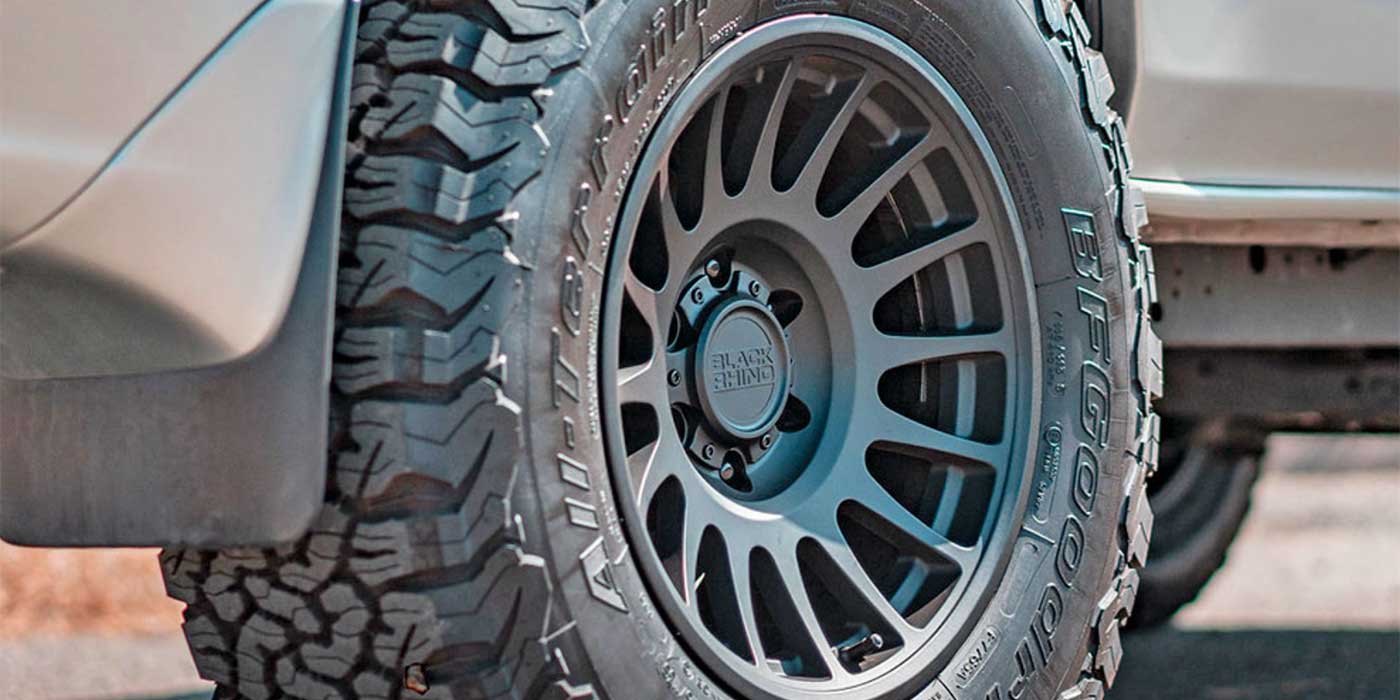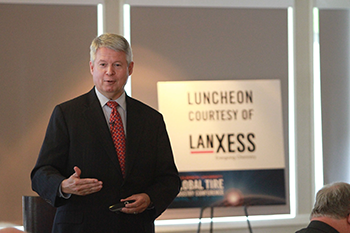 At the recent Clemson University Tire Industry Conference (at which I was a guest speaker), Pete Selleck, chairman and CEO of Michelin North America was the keynoter. In his 20-minute talk, Selleck touched on a few key issues both he and MNA feel strongly about.
At the recent Clemson University Tire Industry Conference (at which I was a guest speaker), Pete Selleck, chairman and CEO of Michelin North America was the keynoter. In his 20-minute talk, Selleck touched on a few key issues both he and MNA feel strongly about.
On still-pending tire fuel efficiency ratings and labeling:
“The consumer information program that was actually passed by Congress back in 2007 is basically to put grading on tires to allow the consumers to see the energy efficiency, the fuel efficiency of the tire, the wet braking capability of the tire and the wear capability of the tire. But what’s significant about this particular law is that it did not set any thresholds. It said we’ll give consumers information, but no matter what the grade is, the tire’s going to be sellable in the country. That’s different from what happened in Europe. Europe has done something similar, but what’s happened, the big change, the big difference is that in the rest of the world regulations for rolling resistance or fuel economy and wet traction either are in place or are being considered by virtually every major country in the world except for North America. Okay? So, you can see all of Europe, Brazil, Saudi Arabia – that’s kind of interesting – these countries all have minimum thresholds. A tire cannot be sold if it fails to meet a minimum level for fuel efficiency or for wet breaking. And, of course, the two go together because in designing a tire you can possibly get one characteristic to a certain level by giving up on the other. You need to have both at the same time. That means that wear becomes the major variable, the independent variable in the equation. Other countries are considering such regulation, like Morocco, South Africa, India, China. I mean, China’s got a huge environmental problem. They’ve got all these people that are going to be getting their cars in the next 20 years. Many of you, I’m sure, have been to Beijing or to Shanghai or to some of the major cities. It’s not a pleasant place to be, primarily because of the pollution.
“So, if they are also considering regulations for wet braking and for fuel economy levels, the question is what are we going to do? And when you start setting these requirements, there are certain manufacturers in the world that just simply don’t have very much R&D. They don’t have very much technology. So, where can they send their products that are not fuel-efficient, that cause a lot of pollution and that are dangerous from a wet braking standpoint? Where do they send their tires? Now, today, they can send a lot to Africa, but there aren’t that many cars in Africa. But certainly the U.S., Canada, Mexico become prime targets for that stuff. And one of the changes that happened when the Europeans put their rule in for grading with thresholds in 2012 is that their import of low-tech tires dropped off dramatically, and we think we all know where those tires are ending up today.
“We believe, and this is increasingly our main position, that the United States needs a rolling resistance and a wet traction standard, the minimum level that all tires have to be at. We think it’s important to conserve resources and conserve fuel. It improves safety. Obviously wet breaking improves the safety performance of vehicles. It encourages innovation, R&D and the use of the latest technology that the industry has. It improves the environment by lowering emissions, and it aligns us with the rest of the world. Now, obviously this is easy to write down. What’s amazing is that the industry – through the RMA – agrees to this. We’ve struggled with it over the years because we all have tires today in our portfolios that do not meet the standards that we’re proposing. So, we know that we’re going to have to do a lot of work. But it is amazing that we’ve gotten to the point of consensus. So now, we’re going to the White House, we’re going to the EPA, we’re going to NHTSA, and we’re all saying we want regulation. Unfortunately, in Washington today there is not a whole lot of regulation going on. There’s not a whole lot of anything going on in Washington today. So, we have an industry that has agreed to this position, and now it’s just a matter of seeing how it’s going to move forward. Certainly the work that we all need to do together to make this happen is very important.”
On the value of tire grading:
“We’ve learned a lot from what’s happened in Europe the last couple of years with the application of grading and thresholds. Europe’s grading is on rolling resistance, wet traction and noise, and we’re going to be grading wear instead of on noise. Basically our view is that grading and labeling really hasn’t affected, it has not changed significantly consumer behavior. The additional information from the grading has not made a significant change in the tire purchase process. So, we really question at this point even the value of grading. What has been impactful are the thresholds, the fact that tires that cannot meet the minimum standards are no longer able to be sold. That’s the significant finding of what’s happening in Europe. So, thresholds really are important.
“Our consensus position at the RMA is we advocate that Congress establish a tire fuel efficiency performance standard coupled with a wet traction performance standard. We’ve tested within the RMA. We’ve tested all the tires. About 15% of the tires that are sold today in the United States by member companies would have to be upgraded. And we can do that. We want to make sure that rolling resistance performance is not achieved at the expense of wet traction. They’ve got to both be done together, and with the level of technology that all of the member companies in the RMA have today, we’re ready to meet this challenge.
On tire registration:
“This is a fairly sort of controversial issue, but I think it’s something that we’re going to have to deal with as an industry. We do manufacture and sell a safety product. We’ve got to recognize that tire performance has a huge impact on the safety of the vehicle. And in the event we have a problem, recovering as many of the tires involved in a recall is extremely important. Every tire that you can’t get is an issue. It’s a problem. Today the numbers that we see whenever we have a recall, the recovery rates are normally somewhere around 20%. That means 80% of the tires in the recall we can’t find. Some of them may have already been worn out, but we can’t account for them. We don’t know where they are. And obviously that’s a problem. You want to be able to get a much higher yield than 20%.
“So, obviously registration should be a point of emphasis for both manufacturers and dealers as a means to improve recovery rates. The RMA supports mandatory registration. We’ve had a voluntary registration program now for a couple of decades. We’ve seen really the limit of what that can do. We support mandatory registration, and obviously a number of very interesting options are being considered, possible linkage to the vehicle identification number, about which could be very, very powerful. There is technology today that did not exist 20 years ago that we need to consider something that’s efficient for the dealers because the dealers are the ones that are going to have to do the work. They’re the only ones that can control this. Obviously the manufacturers cannot. But we have to be able to get these tires when they come back. NHTSA is looking at this. The NTSB has an ongoing investigation going on related to this, and we have to take this all very seriously because we have to be responsible, and as an industry we need to address this.”
On the world-wide growth in motor vehicles and barriers some face even obtaining a working car or truck:
“We’ve got a number of cars that are going to double from 800 million in the year 2000 to 1.6 billion by the year 2030. Now, in the United States you’re not going to see that because virtually everybody in this country already owns a car. We’re building a plant in Shenyang, China. If you build a plant in Shenyang and you’re going to have 1,500 employees, how big does the parking lot have to be? How many cars does the parking lot have to hold? Today about 50 cars. It used to be 20. It’s now up to 50. We know that in 20 years from now, there’s going to be, oh, probably 500, okay? Because more and more employees in China are getting wage levels to the point where they can finally afford their first car. We’re talking about people that are emerging from significant poverty, which, by the way, you talk about poverty in this country, if you’ve lived around the world, you can kind of talk about inequality. There is inequality in this country, but there’s also huge inequality between our country and the rest of the world. Watching these families move out of really, really low levels of income to really the lower middle class that we might consider and being able to afford a car for the very first time is a life-changing experience. But obviously, if you double the number of cars on the planet, that’s an issue.”
On growing CO2 emissions and global warming:
“We also know that about half of the oil today is used for road transport. That’s an important thing to understand. We’re all moving all over the place. Half of it’s for road transport. About 15% to 18% of CO2 emissions are due to road transport. So, global warming, whether or not you believe it, it’s, you know, there’s a lot of CO2 that’s being emitted. And we know that in this country, we have 220 million vehicles that are using 130 billion gallons of fuel every year. Those are just some facts, but those are big numbers. And you can imagine that this is having an impact. If it’s not having an impact on the environment, which I think it is, it’s certainly having an impact on safety and certainly on congestion. So, there’s all sorts of issues that are associated with this that we need to take into account.”
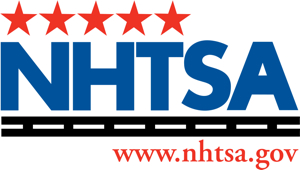 And speaking of the need for consistent global tire standards and the competency of NHTSA, the federal agency chose to not attend a February meeting in Geneva that continued the global effort to globalize tire and vehicle safety and quality standards.
And speaking of the need for consistent global tire standards and the competency of NHTSA, the federal agency chose to not attend a February meeting in Geneva that continued the global effort to globalize tire and vehicle safety and quality standards.
Proving that the U.S. always knows better, NHTSA said it didn’t attend because it “was not in a position to implement additional requirements specified in the U.N. rule,” and because there was nothing new related to the Global Technical Regulations regarding tires.
NHTSA (the U.S.) abstained from a November 2014 vote on the first phase of an effort to harmonize tire regs and marking worldwide. The European Union, China, Canada, South Korea, India and other countries voted in favor of that GTR.
The U.S. team said it would attend a scheduled March meeting of the group, but we do not know if they, in fact, did so.

